BookWorm
Published in Issue 6 (November/December 2013), Reviews, Volume 21 The centenary of the 1913 Lockout has understandably generated a good deal of writing this year (and thanks to all who bought our recent special issue, which sold out). Life in Dublin’s poverty-stricken slum tenements is revealed in unflinching detail in Terry Fagan’s Dublin tenements: memories of life in Dublin’s notorious
The centenary of the 1913 Lockout has understandably generated a good deal of writing this year (and thanks to all who bought our recent special issue, which sold out). Life in Dublin’s poverty-stricken slum tenements is revealed in unflinching detail in Terry Fagan’s Dublin tenements: memories of life in Dublin’s notorious  tenements (North Inner City Folklore Project, €14.99, 192pp, ISBN 97817828001085). Fagan has been interviewing inhabitants of Dublin’s north inner city since the 1970s, and this publication, like his previous study of Monto, is mainly drawn from those interviews. This is a powerful piece of oral history dealing with an aspect of Irish social history all too often ignored by scholars.
tenements (North Inner City Folklore Project, €14.99, 192pp, ISBN 97817828001085). Fagan has been interviewing inhabitants of Dublin’s north inner city since the 1970s, and this publication, like his previous study of Monto, is mainly drawn from those interviews. This is a powerful piece of oral history dealing with an aspect of Irish social history all too often ignored by scholars.
David Convery’s (ed.) Locked out: a century of Irish working-class life (Irish Academic Press, €24.95 pb, 260pp, ISBN 9780716532026) goes beyond the implications of its title to offer up a series of case-studies in Irish class politics throughout the twentieth century: from 1913 to the Animal Gangs of 1930s Dublin, to industrial unrest in 1940s Belfast, to the industrial  school system and much else besides.
school system and much else besides.
Regular readers might recall that Seán Keating’s painting An Allegory was used on the cover of our Jan./Feb. 2011 issue. Keating’s art is ubiquitous when it comes to chronicling those aspects of twentieth-century Ireland with which he was concerned, but the man himself is now the subject of a lavish new biography that acts as a de facto portfolio of 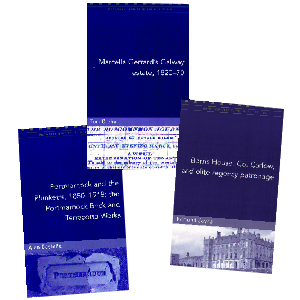 his work: Éimear O’Connor’s Seán Keating: art, politics and building the Irish nation (Irish Academic Press, €39.95 pb, 384pp, ISBN 9780716531937). And readers of Jim Rees’s article on the Arklow fishery in our Jan./Feb. 2013 issue might be interested in his full-length account of land reform and Home Rule in one of the major towns of Parnell’s home county: Split personalities: Arklow 1885–1892 (Dee-Jay Publications, €14.95, 300pp, ISBN 9780951923979).
his work: Éimear O’Connor’s Seán Keating: art, politics and building the Irish nation (Irish Academic Press, €39.95 pb, 384pp, ISBN 9780716531937). And readers of Jim Rees’s article on the Arklow fishery in our Jan./Feb. 2013 issue might be interested in his full-length account of land reform and Home Rule in one of the major towns of Parnell’s home county: Split personalities: Arklow 1885–1892 (Dee-Jay Publications, €14.95, 300pp, ISBN 9780951923979).
The latest in the perennially interesting Maynooth Studies in Local History series have been published by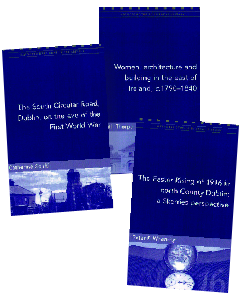 Four Courts Press: Alan Costello, Portmarnock and the Plunketts, 1850–1918: the Portmarnock brick and terracotta works (€9.95, 64pp, ISBN 9781846824036); Tom Crehan, Marcella Gerrard’s Galway estate, 1820–70 (€9.95, 64pp, ISBN 9781846824012); Edmund Joyce, Borris House, Co. Carlow, and elite regency patronage (€9.95, 68pp, ISBN 9781846824043); Catherine Scuffil, The South Circular Road, Dublin, on the eve of the First World War (€9.95, 64pp, ISBN 9781846824050); Ruth Thorpe, Women, architecture and building in the east of Ireland, c. 1790–1840 (€9.95, 68pp, ISBN 9781846824005); and Peter F. Whearity, The Easter Rising
Four Courts Press: Alan Costello, Portmarnock and the Plunketts, 1850–1918: the Portmarnock brick and terracotta works (€9.95, 64pp, ISBN 9781846824036); Tom Crehan, Marcella Gerrard’s Galway estate, 1820–70 (€9.95, 64pp, ISBN 9781846824012); Edmund Joyce, Borris House, Co. Carlow, and elite regency patronage (€9.95, 68pp, ISBN 9781846824043); Catherine Scuffil, The South Circular Road, Dublin, on the eve of the First World War (€9.95, 64pp, ISBN 9781846824050); Ruth Thorpe, Women, architecture and building in the east of Ireland, c. 1790–1840 (€9.95, 68pp, ISBN 9781846824005); and Peter F. Whearity, The Easter Rising 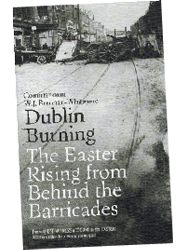 of 1916 in north County Dublin: a Skerries perspective (€9.95, 68pp, ISBN 9781846824029).
of 1916 in north County Dublin: a Skerries perspective (€9.95, 68pp, ISBN 9781846824029).
One of the most detailed and vivid eyewitness accounts by a participant in the 1916 Rising has been re-released in a handsome new edition: W.J. Brennan-Whitmore’s Dublin burning: the Easter Rising from behind the barricades (Gill & Macmillan, €19.99 hb, 200pp, ISBN 9780717159307). According to Pauric Travers’s introduction, Brennan-Whitmore had ‘a journalist’s eye for detail, which gives his memoir an immediacy and a human dimension which is lacking in other accounts’, up to and including ‘a publican who offers the contents of his pub for that cause’. The revolution in Dublin is also covered by Liz Gillis in Re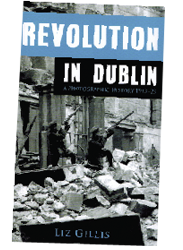 volution in Dublin: a photographic history, 1913–23 (Mercier Press, €15.99 pb, 192pp, ISBN 9781781170519). Sadly, the passage of time hasn’t been kind to some images and their quality varies, but this is an intriguing and very useful addition to a growing shelf of books on the revolution, not least because the images reproduced here cast light on a raft of forgotten and neglected individuals and events.
volution in Dublin: a photographic history, 1913–23 (Mercier Press, €15.99 pb, 192pp, ISBN 9781781170519). Sadly, the passage of time hasn’t been kind to some images and their quality varies, but this is an intriguing and very useful addition to a growing shelf of books on the revolution, not least because the images reproduced here cast light on a raft of forgotten and neglected individuals and events.
The Irish Revolution wasn’t confined to Dublin, and Mercier Press has also recently released the latest in a particularly interesting series, the first of which was reviewed in our May/June 2013 issue: Cormac K.H. O’Malley and Cormac Ó Comhraí (eds), The men will talk to me: Galway interviews by Ernie O’Malley (€19.99 pb, 320pp, ISBN 9781781170625), the latest selection culled from O’Malley’s compendious interviews with his revolutionary contemporaries. Another view of Galway 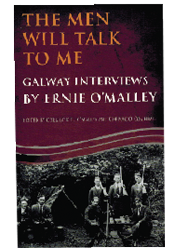 (literally) is provided by Paul Duffy, Galway: history on a postcard (Currach Press, €21.99, 180pp, ISBN 9781856078030), which offers a wonderful panorama of Galway (city and county) in the l
(literally) is provided by Paul Duffy, Galway: history on a postcard (Currach Press, €21.99, 180pp, ISBN 9781856078030), which offers a wonderful panorama of Galway (city and county) in the l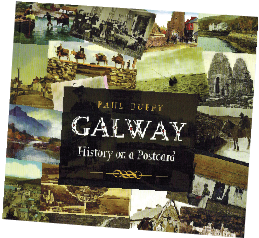 ate nineteenth and early twentieth centuries, illustrated with a vast array of rare postcards collected by the author over the years; all Galway life is here. A more sombre perspective on the Irish past is provided by John B. Cunningham, The great silence: the famine in Fermanagh, 1845–1850 (Davog Press, no price given, 216pp, ISBN 9781907530258). This impressive project provides a chronicle of the Famine largely assembled from a variety of contemporary newspapers in Fermanagh, giving it a rare immediacy.
ate nineteenth and early twentieth centuries, illustrated with a vast array of rare postcards collected by the author over the years; all Galway life is here. A more sombre perspective on the Irish past is provided by John B. Cunningham, The great silence: the famine in Fermanagh, 1845–1850 (Davog Press, no price given, 216pp, ISBN 9781907530258). This impressive project provides a chronicle of the Famine largely assembled from a variety of contemporary newspapers in Fermanagh, giving it a rare immediacy.
Finally, we come to John Barry and Hiram Morgan (eds), Great deeds in Ireland: Richard Stanihurst’s De Rebus in Hibernia Gestis (Cork University Press, €39 hb, 544pp, ISBN 9781909005723), which 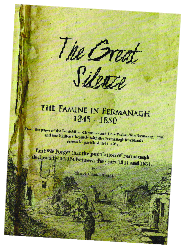 offers the first complete translation (along with the original Latin text) of Stanihurst’s history of Ireland, originally published in the Netherlands in 1584. Stanihurst was Old English, of Norman descent, yet a member of a colonial community being pressurised by the increasingly Protestant disposition of the ‘
offers the first complete translation (along with the original Latin text) of Stanihurst’s history of Ireland, originally published in the Netherlands in 1584. Stanihurst was Old English, of Norman descent, yet a member of a colonial community being pressurised by the increasingly Protestant disposition of the ‘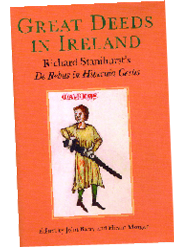 New English’ in the Elizabethan era. The book was written in exile and provided an account of Ireland and its people in relation to the Anglo-Norman conquest, while also articulating, albeit in allegorical terms, the difficulties that his community faced through their adherence to the old faith. But it was roundly condemned by Gaelic exiles, who were none too impressed with Stanihurst’s depictions of Ireland and the Irish; the book was even burned in Portugal by the Inquisition. This handsome scholarly edition is the debut project of UCC’s new Centre for Neo-Latin Studies; it will be interesting to see what they produce next.
New English’ in the Elizabethan era. The book was written in exile and provided an account of Ireland and its people in relation to the Anglo-Norman conquest, while also articulating, albeit in allegorical terms, the difficulties that his community faced through their adherence to the old faith. But it was roundly condemned by Gaelic exiles, who were none too impressed with Stanihurst’s depictions of Ireland and the Irish; the book was even burned in Portugal by the Inquisition. This handsome scholarly edition is the debut project of UCC’s new Centre for Neo-Latin Studies; it will be interesting to see what they produce next.
















